Spine Conditioning Basics
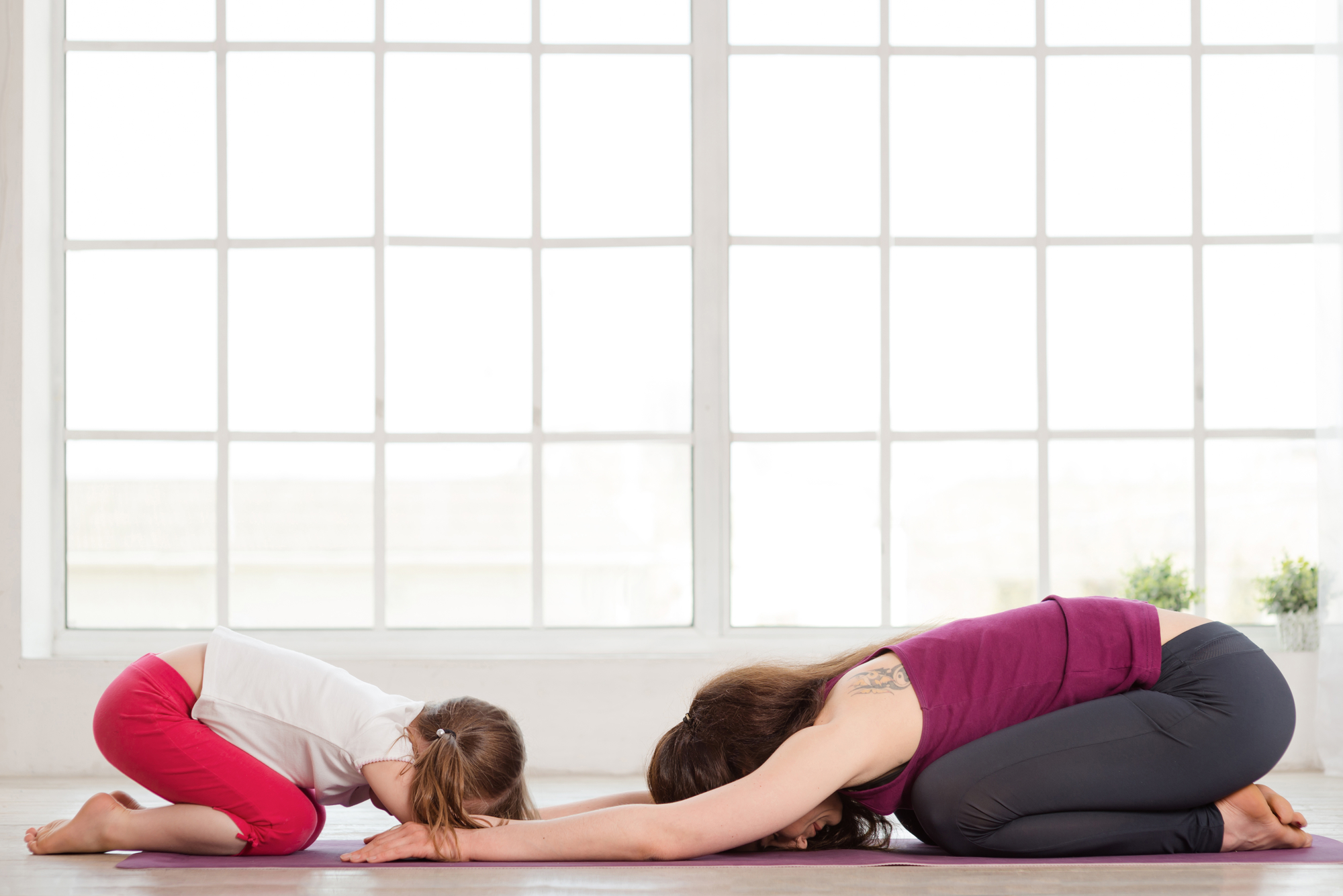
It is estimated that more than 80% of Americans will suffer from back pain at some point in their life making it one of the most common reasons why people go to the doctor, miss work and stop participating in activities they love. The DOC movement experts have put together a basic spine conditioning routine that is easy to implement in your own home to keep you active, mobile and busy with whatever it is that makes you happy. Always get started with a warm-up consisting of five to ten minutes of low impact activity like walking or riding a stationary bike.
Stretching for Lower Back Mobility
Child’s Pose: This common yoga posture gently stretches the muscles of the low back, which can contribute to unnecessary stressors on the spine when tight.
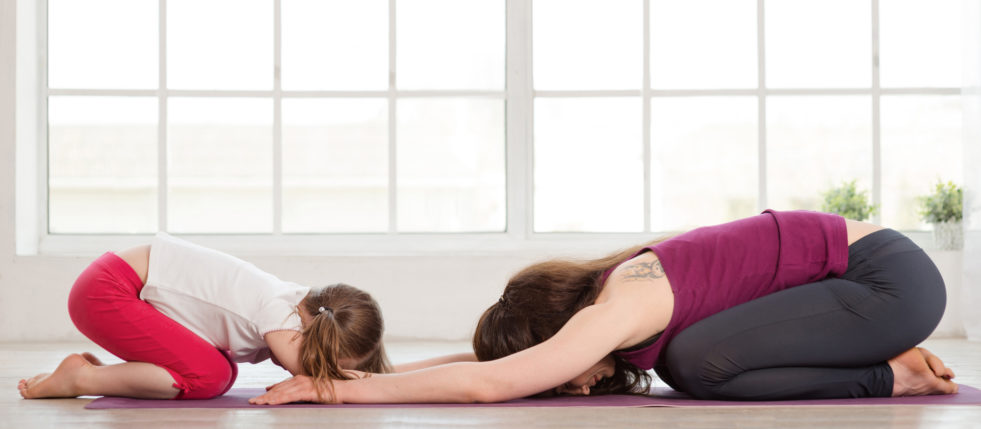
How to do it: Begin on your hands and knees on the floor with your hands under your shoulders and knees under your hips. Reaching directly forward, round the back into a cat stretch. Rock backward sitting on your heels while extending the arms forward. Hold this for 20 to 30 seconds. Repeat 3 times.
Pelvic Tilt: Your spine sits on your pelvis. So keeping the pelvis mobile is key to a healthy spine. The pelvic tilt stretch can help gently introduce movement to this area, ensuring a healthy foundation for your spine to sit on.
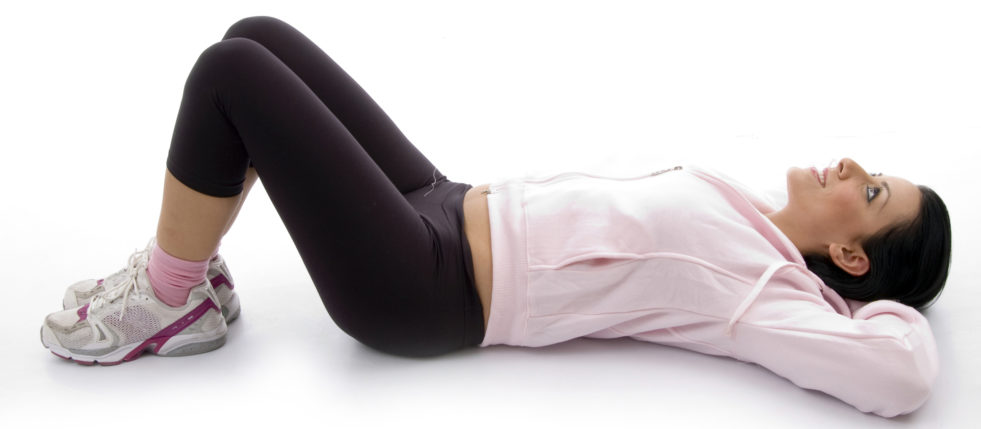
How to do it: Lie on your back with your knees bent. Arch your low back and then flatten it against the floor by slightly tilting your pelvis upward. Your pelvis should tilt forward and back during the movement. Move through a comfortable range of motion. Repeat 12 to 15 times.
Trunk Rotation Stretch: The trunk rotation stretch is a great way to mobilize your cervical, thoracic and lumbar spine while providing a good stretch for the supporting musculature and soft tissue.
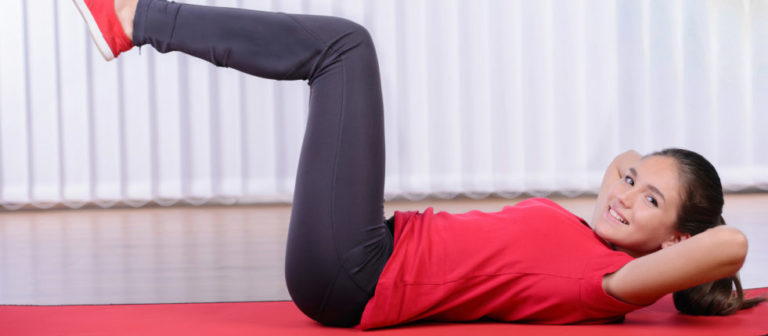
How to do it: While lying on your side with your arms stretched out in front of your body, slowly twist your upper body to the side and rotate your spine. Your arms and head should also be rotating along with the spine. Follow your hand with your eyes. Hold 20 to 30 seconds. Return to the starting position. Repeat on the other side.
Knee to Chest Stretch: This stretch helps maintain healthy low back muscles by releasing tightness in the muscles as well as working your range of motion, increasing joint flexibility.
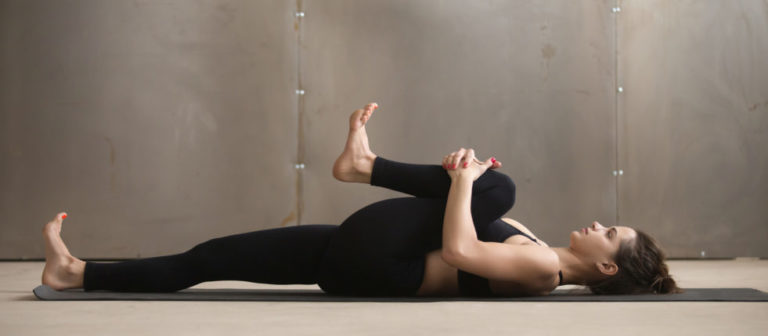
How to do it: Lie on your back with the knees bent and both heels on the floor. Place both hands behind one knee and gently lift it towards your chest. Hold 20 to 30 seconds. Return to starting position. Repeat with your other leg.
Spine Strengthening Exercises
Bird dog exercise: This exercise is a great way to engage and strengthen your core muscles, which in turn stabilize and protect your spine.

How to do it: Begin on hands and knees. Tighten buttocks, thigh and abdominal muscles before raising one arm to shoulder height. Then slowly lift and extend your opposite leg from the hip. Try to keep your shoulders and pelvis steady and even throughout the movement. Return to starting position. Repeat with the opposite arm and leg. 10 times for 3 sets.
Planks: Planks build endurance in the core muscles that work to support your spinal posture after a long day. When our posture fails, we put ourselves at increased risk for injury.

How to do it: Lie on your stomach with forearms on the floor and elbows below the shoulders. Tighten the abdominal muscles and lift the hips and knees off the floor. Try to keep your body straight without allowing your hips or back to droop for as long as you can. Slowly return to the starting position. Rest 30 seconds. Repeat 5 times.
Hip Bridges Hip bridges focus on your gluteus maximus muscle. Your glutes work to decelerate the flexion of your hips during walking, help counteract the downward pull of gravity and prevent your lumbar spine from over-rounding forward.
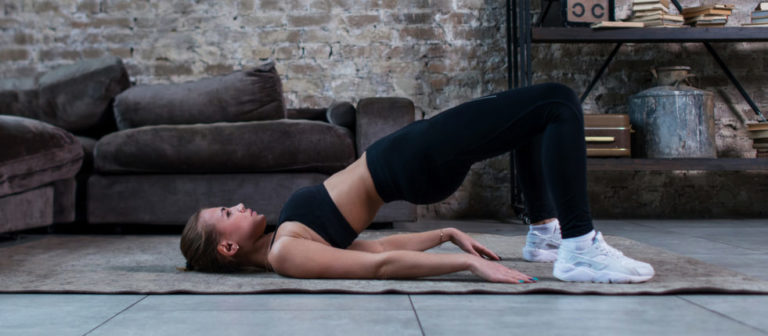
How to do it: Lie on your back with knees bent and feet flat on the floor. Tighten the abdominal muscles and lift your pelvis off the floor so the body is in a straight line from shoulders to knees. Gently lower yourself to starting position. Repeat 10 times for 3 sets. To ensure that a spine conditioning program is safe and effective for you, have a DOC physical therapist, orthopedic surgeon or specialty-trained PA diagnose, treat, and manage your back, neck and spine condition. The DOC team can tailor a mobility and strengthening program based on your individual needs, injuries, chronic conditions, surgeries, and wellness goals.
To learn more about spine conditioning, schedule an appointment with DOC today!
For more information on the cost of care, click here.




